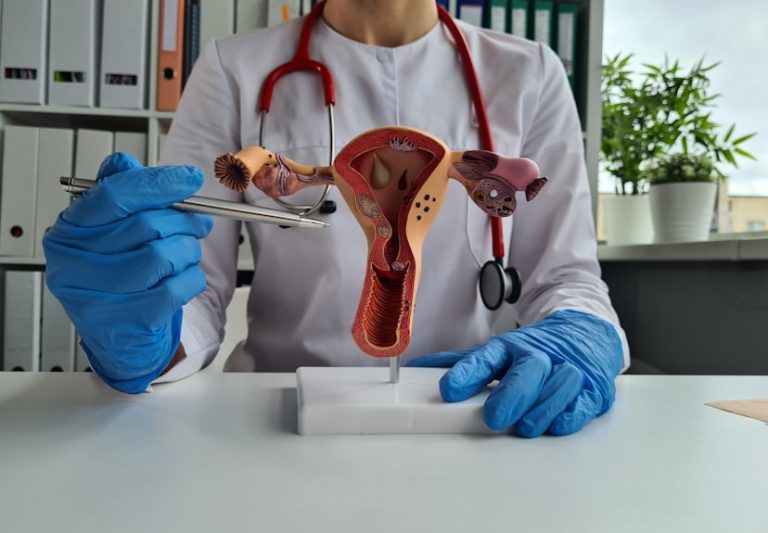
Perineoplasty surgery is a specialized gynecological procedure aimed at repairing and tightening the perineal area—the region between the vaginal opening and the anus. Often sought after childbirth or due to aging-related tissue laxity, this reconstructive surgery not only restores anatomical integrity but also enhances function and sexual satisfaction. Women considering future pregnancies may often wonder how this surgery influences the process of childbirth. The concern is valid and deserves a deep, medically informed explanation. Women planning to undergo this procedure often inquire about the implications of Perineoplasty Surgery in Dubai.
What is Perineoplasty Surgery?
Perineoplasty is a minor reconstructive surgical procedure performed to restore the perineal body’s shape, tone, and structure. It focuses on the muscular and mucosal tissues that may have been stretched or damaged during childbirth, trauma, or aging. Typically, the surgery is performed by a gynecologist or urogynecologist and takes about 1-2 hours under general or local anesthesia.
Why Do Women Undergo Perineoplasty?
Women opt for perineoplasty for multiple reasons:
| Reason | Description |
|---|---|
| Post-Childbirth Trauma | Repair tearing or episiotomy scars, and tighten lax muscles |
| Aesthetic Concerns | Reconstruct the perineal tissue for a better cosmetic appearance |
| Functional Issues | Improve muscle tone, prevent mild prolapse or involuntary leakage |
| Sexual Discomfort | Increase friction and sensation during intercourse |
| Pelvic Floor Weakness | Restore pelvic support and overall health |
Does Perineoplasty Surgery Affect Future Childbirth?
Yes, Perineoplasty surgery can affect future childbirth, but the effect depends on multiple factors, such as the surgical technique, healing outcome, and the mode of delivery chosen. Since the surgery involves the reconstruction and tightening of the perineum, subsequent vaginal deliveries may challenge the surgical site, potentially leading to re-tearing or structural changes.
Can You Have a Vaginal Delivery After Perineoplasty?
Technically, vaginal delivery after perineoplasty is possible, but it is not always advisable. Doctors typically consider the following:
-
Degree of Perineal Tightening: If the surgery involved significant reconstruction, vaginal delivery could undo the results.
-
Pelvic Floor Stability: A weak pelvic floor combined with a tight perineum can increase the risk of tearing.
-
Scar Tissue Elasticity: Scar tissue does not stretch as easily as normal tissue, increasing the risk of rupture during labor.
-
Patient’s Preference & Health History: Many women and doctors prefer C-sections to preserve surgical results.
Obstetricians’ Approach to Post-Perineoplasty Pregnancy
When a patient who has undergone perineoplasty becomes pregnant, obstetricians typically follow this protocol:
Assessment of Perineal Integrity: They evaluate the perineum’s elasticity and strength during pelvic exams.
Ultrasound Monitoring: To check the baby’s size and position to plan a safe delivery route.
Delivery Planning: If vaginal delivery is deemed risky, a C-section is scheduled to avoid trauma to the surgical area.
Interdisciplinary Consultation: Some obstetricians collaborate with the gynecologist who performed the surgery for optimal care planning.
Factors That Influence Childbirth Post-Surgery
| Factor | Impact on Childbirth |
|---|---|
| Surgical Technique | Aggressive tightening may make vaginal delivery riskier |
| Scar Tissue Presence | Reduces elasticity and healing capacity during labor |
| Patient’s Age | Older mothers may have slower healing and reduced tissue flexibility |
| Baby’s Size | Larger babies can increase the risk of tearing during vaginal delivery |
| Time Between Surgery & Pregnancy | Longer gaps allow better healing and tissue adaptation |
Comparing Vaginal Birth vs. C-Section
| Aspect | Vaginal Birth | C-Section |
|---|---|---|
| Risk to Perineum | High (possibility of tearing or scarring) | Minimal to none |
| Preservation of Results | Risk of surgical site disruption | Results generally preserved |
| Recovery Time | Faster, but may include perineal discomfort | Longer, but the perineum remains intact |
| Preferred by Doctors? | Case-specific | Often preferred to avoid surgical complications |
Benefits of Perineoplasty Surgery
Perineoplasty offers both functional and psychological benefits that go beyond aesthetics. Here are the key advantages:
| Benefit | Details |
|---|---|
| Improved Muscle Tone | Helps tighten the perineal and pelvic floor muscles |
| Enhanced Sexual Experience | Boosts sensation and intimacy |
| Better Pelvic Support | Minimizes the risks of minor prolapse or leakage |
| Emotional Confidence | Elevates self-esteem and body image |
| Reconstructed Anatomy | Restores appearance and function post-childbirth |
FAQ’s
1. Is it safe to get pregnant after perineoplasty?
Yes, pregnancy is safe after full recovery. However, delivery method (vaginal or C-section) should be discussed with your OB-GYN.
2. Can perineoplasty affect fertility?
No, perineoplasty does not involve reproductive organs and has no impact on fertility.
3. Will I need another surgery after childbirth?
Not always. If a C-section is performed, surgical results are typically preserved. Vaginal delivery may necessitate touch-up procedures.
4. How long after perineoplasty can I try for a baby?
Doctors recommend waiting at least 6 to 12 months to allow for complete healing.
5. Does perineoplasty change the way childbirth feels?
The surgery may alter tissue elasticity, but with proper delivery planning, discomfort can be minimized or avoided.
Final Thoughts
Perineoplasty surgery is a powerful reconstructive tool that can enhance a woman’s physical and emotional well-being. While it may influence childbirth choices, it doesn’t prevent you from starting or growing your family. The key lies in working closely with a qualified gynecologist and obstetrician to ensure safe and healthy outcomes for both mother and baby.






